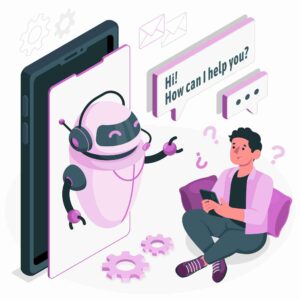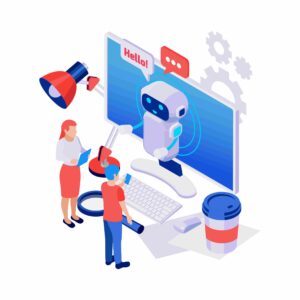What is ChatGPT and How does it works
What is ChatGPT and How does it works
ChatGPT is a variant of the GPT (Generative Pre-trained Transformer) language model specifically designed for chatbots. It is a machine learning model that has been trained on a large dataset of conversational exchanges and can generate responses to the text input in a way that is similar to how a human might respond in a conversation. The goal of ChatGPT is to enable chatbots to engage in natural, human-like conversations with users. It is trained to generate text that is appropriate, relevant, and coherent in the context of a given conversation, and can be used to build chatbots that can hold conversations with users on a variety of topics.
What are the benefits of ChatGPT?

There are several benefits to using ChatGPT
Human-like conversation: ChatGPT is trained to generate text that is appropriate, relevant, and coherent in the context of a given conversation, making it ideal for building chatbots that can hold natural, human-like conversations with users.
Customization: ChatGPT can be fine-tuned for specific use cases or industries, allowing developers to customize the chatbot’s responses to fit their needs.
Scalability: Because ChatGPT is a machine learning model, it can handle a large volume of conversation without becoming overwhelmed. This makes it well-suited for chatbots that need to handle a high volume of traffic.
Improved user experience: By providing more natural, human-like responses, ChatGPT can improve the user experience when interacting with chatbots.
Cost savings: ChatGPT can help automate customer service tasks, reducing the need for human staff and potentially leading to cost savings.

Where ChatGPT can be used?
There are many potential applications for ChatGPT in the development of chatbots. Here are a few examples:
Customer service: ChatGPT can be used for managing customer inquiries and complaints, and providing prompt and accurate responses to user questions and issues.
E-commerce: ChatGPT can be helpful in assisting users with shopping, recommending products, and answering product-related questions.
Education: ChatGPT can be used to assist with learning, providing explanations, and answering student questions.
Social media: ChatGPT can be helpful in engaging with users on social media platforms, providing information, and responding to user questions and comments.
Entertainment: ChatGPT can be used to build chatbots that can provide entertainment, such as by telling jokes or engaging in lighthearted conversation.
What are the limitations of ChatGPT?
Like any machine learning model, ChatGPT has limitations and may not be suitable for all use cases. Some potential limitations of ChatGPT include:
Limited understanding of context: While ChatGPT is trained on a large dataset of conversational exchanges and can generate responses that are appropriate and relevant in a given context, it may not always have a deep understanding of the context in which it is being used.
Lack of personalization: ChatGPT is trained on a large dataset of general conversational exchanges, and as such may not be able to provide personalized responses that are tailored to individual users.
Potential for generating inappropriate responses: ChatGPT is trained on a dataset of conversational exchanges so it may generate responses that are inappropriate or offensive in certain contexts.
Dependence on training data: ChatGPT’s responses are generated based on the training data it has been provided, and as such may not be able to respond to queries or topics that are outside of its training data.
Limited ability to understand and generate non-textual information: ChatGPT is a text-based model and is not designed to understand or generate non-textual information, such as images or audio.

Can ChatGPT replace Google search or humans?
ChatGPT is a powerful machine learning model that is designed for generating responses to the text input in a way that is similar to how a human might respond in a conversation. However, it is not designed to replace Google search or humans in all situations.
Google search is a tool that is specifically designed to search the web for information and is an essential tool for finding information on the internet. It is not designed for conversation or for providing personalized responses, and as such cannot be used as a replacement for human interaction in many cases.
Similarly, ChatGPT is a tool that is designed for generating responses to the text input in a way that is similar to how a human might respond in a conversation. While it can be used to build chatbots that can hold conversations with users on a variety of topics, it is not designed to replace human interaction in all situations. There are many tasks and interactions that require a level of understanding and personalization that ChatGPT is not capable of providing.

